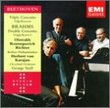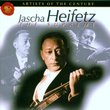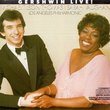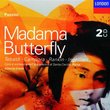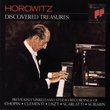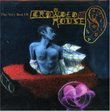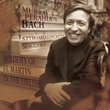| All Artists: Robert Schumann, Vladimir Horowitz Title: Schumann: Kinderszenen Op15, Kreisleriana, Arabesque, Toccata Members Wishing: 0 Total Copies: 0 Label: Sony Release Date: 10/25/1990 Genre: Classical Styles: Forms & Genres, Fantasies, Historical Periods, Modern, 20th, & 21st Century Number of Discs: 1 SwapaCD Credits: 1 UPC: 074644240924 |
Search - Robert Schumann, Vladimir Horowitz :: Schumann: Kinderszenen Op15, Kreisleriana, Arabesque, Toccata
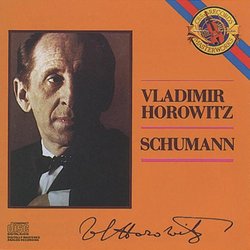 | Robert Schumann, Vladimir Horowitz Schumann: Kinderszenen Op15, Kreisleriana, Arabesque, Toccata Genre: Classical
|
Larger Image |
CD DetailsSimilar CDsSimilarly Requested CDs
|
CD ReviewsThe Definitive Kreislerianna Edwin J. Firmage | SLC, UT USA | 11/01/2005 (5 out of 5 stars) "Everything on this disc is what you'd expect from one of the greatest pianists of all time: superb. But the treasure is the Kreislerianna, of which this is the definitive recording. I've searched in vain for a more recent, sonically better version. There is, for example, a decent recording of the piece by Perahia, a mediocre one by Brendel, and an awful one by Argerich (arghhh!), but nothing matches this. Radu Lupu's comes the closest, but it lacks the definition and vision of Horowitz's, especially in the opening section. People sometimes berate Horowitz as too much a technician, much as they did Gould. But how they can say that in the face of a deeply felt interpretation such as this is beyond me. I first heard this recording when I was about 16 (luckily, since this isn't your average bedtime classical sampler, and it needs the right interpreter) and have loved it ever since. The Kreislerianna, incidentally, is also among Schumann's most lovely works, melodic, and complex." Horowitz Exemplifies Schumann with Simplicity and a Singing Raymond Vacchino | Toronto, ON. Canada | 10/08/2007 (5 out of 5 stars) "For this recital of works by Schumann, Horowitz chose a program that would convey his inner intimacy and lyrical tenderness, except for the Toccata Op. 7. Although the Toccata demands the utmost in technique from the performer, it is far from a mere showpiece, for it has been enriched by Schumann's genius. The work is highly unusual in that it is in sonata form, although Horowitz keeps up the toccata character throughout. In Kinderszenen Horowitz leaves little to be desired. The clarity of notation, the delicacy of phrasing, the directions regarding dynamics, articulation and agogics are magically crafted. However, Horowitz is not mislead into underestimating the intellectual and technical difficulties, but rather encourages one to preserve the inner lightness and gentle buoyancy of these small pieces. The last piece, 'The Poet Speaks', is somewhat of an epilogue which sums up the whole work. It is Schumann, the poet, speaking. You know of course they were written for his wife Clara, and before they had children. They may look simple, but each is an incredible masterpiece. Schumann later added the individual titles to give delicate hints on approach and interpretation. The set of eight fantasy pieces entitled Kreisleriana was one of the composer's favorite works. In a letter to Clara, written before their marriage in 1840, Schumann wrote: "Play my Kreisleriana occasionally. In some passages there is to be found an utterly wild love, and your life and mine, and many of your looks." Horowitz's interpretation of Kreisleriana was less successful. There was a certain kind of unease that extended even to the pianisitics. It was a nervous performance in which the line was often broken, the intimacy and tender beauty were missing and the work tended to sound convulsive. Horowitz himself was not pleased with his Carnegie Hall performance enough to approve its release and decided to rerecord the work. The performance given for this CD is far more superior in clarity of sound and pacing, yet Horowitz never felt totally confident about its many performances, always feeling the playing was somewhat over animated. In the well known Arabesque,Op.18, Horowitz plays with amazing freedom, and the long, seamless phrases are shaped with delicacy as they gently rise and fall with just enough rhythmic vitality to maintain the forward momentum. This was to become a trademark piece often performed in recitals. Composed in the same year, Blumenstuck,Op.19 is one of the final works of this period and considered to be one of Schumann's most beautiful melodies. The work is one of the small treasures of the piano repertory and Horowitz loves it dearly, as his playing of it conveys remarkable lyricism and sonorities filled with the ignoble intention of expressing, describing, painting this or that. Mr. Horowitz regarded this work as one of the neglected masterpieces of Schumann. This ever youthful work of Schumann fulfills effectively the requirement once made by the composer:...there should really be something of Spring in every piece of music." Author:Raymond Vacchino M.Mus.(MT) A.Mus. L.R.S.M. Licentiate (hon.)" An inspiring and inspired Kreisleriana... Hank Drake | Cleveland, OH United States | 11/11/2009 (5 out of 5 stars) "Schumann was Vladimir Horowitz's favorite German composer. (Once, when asked why Horowitz felt "at home" in Schumann, his wife responded that "they were both crazy".) This compilation, recorded from 1962-1969 and issued on CD in 1987, offers both the Florestan and Eusebius sides of Schumann's dual nature.
Here we have a reflective Kinderscenen, featuring some remarkable voicing. Horowitz obviously plays the work as an adult looking back on childhood, which is how Schumann wrote the work. This recording is notably more straightforward than the pianist's live 1982 performance, yet somehow less moving emotionally than the wizened recordings from Horowitz's final concerts in 1987. Less successful is the Toccata, which is pianistically unstable and was heavily, and audibly, spliced. This does not rise to the remarkable level of the pianist's famed 1934 recording. I vividly remember the first time I heard this 1969 recording of Schumann's Kreisleriana. It was September of 1985 - I was fresh out of high school. I worked at a classical record store and bought a cassette tape (it was a "Masterworks Portrait" reissue that also had the 1962 Kinderszenen and Toccata). Dusk was falling and it was misting outside, as I slipped the Walkman headphones on. I had already heard Rubinstein's recording of Kreisleriana about a year earlier and thought "this piece is boring." The rapture of Horowitz's performance sent me into another world. Every moment held me spellbound. By the time I got home, I was soaked through. During my walk I took no notice of the weather. Horowitz learned Kreisleriana in the 1930s, but did not play it in public until 1968. Several attempts to record the work in concert were not successful, and Horowitz came to the conclusion that he needed the peace and quiet of a recording studio to achieve the concentration for a performance suitable for posterity. Horowitz recorded the work at one inspired session on December 1, 1969, and this may well be the most successful Kreisleriana ever recorded. Ironically, Horowitz, who often had trouble holding together a Beethoven Sonata, makes this structurally splintered work emerge as one piece. This is one Kreisleriana which is never rambling or boring. There is virtuosity here, but never for its own sake, and there is poetry in plenty. This stands alongside the 1932 Liszt Sonata and 1951 Rachmaninoff Third Concerto as one of Horowitz's greatest recordings. It should be pointed out that this is the only CD reissue (MK 42409) of Kreisleriana where I can guarantee that Horowitz's approved takes are used. All issues from 1993 onward (with the possible exception of the Blu-spec release, which I have not heard) use alternate takes, which are noticeably different from the original LP and this CD issue. Although the performance is basically similar, there are several important differences in detail. It's interesting to compare this version of Schumann's Arabeske, from 1968, with Horowitz's studio recording from 1962. The earlier version features swifter tempos, more delicate colors, and a more structural approach, which contrasts with the comparatively laid-back, yet somehow bolder performance given here. The Blumenstucke (Flower Piece), Op. 19 is almost a companion to the Arabeske. Horowitz plays the piece in a rather breezy manner, with less rubato than his 1975 recording. The sound is more than acceptable here, and especially fine in Kreisleriana." |

 Track Listings (24) - Disc #1
Track Listings (24) - Disc #1
